
Ferdinand II, was a member of the Castilian cadet branch of the House of Ivrea and King of León and Galicia from 1157 until his death.

Ferdinand III, called the Saint, was King of Castile from 1217 and King of León from 1230 as well as King of Galicia from 1231. He was the son of Alfonso IX of León and Berenguela of Castile. Through his second marriage he was also Count of Aumale. Ferdinand III was one of the most successful kings of Castile, securing not only the permanent union of the crowns of Castile and León, but also masterminding the most expansive campaign of Reconquista yet.

Henry I of Castile was king of Castile. He was the son of Alfonso VIII of Castile and Eleanor of England, Queen of Castile. He was the brother of Berenguela and Mafalda of Castile.

Alfonso VII, called the Emperor, became the King of Galicia in 1111 and King of León and Castile in 1126. Alfonso, born Alfonso Raimúndez, first used the title Emperor of All Spain, alongside his mother Urraca, once she vested him with the direct rule of Toledo in 1116. Alfonso later held another investiture in 1135 in a grand ceremony reasserting his claims to the imperial title. He was the son of Urraca of León and Raymond of Burgundy, the first of the House of Ivrea to rule in the Iberian peninsula.

Alfonso IX was king of León and Galicia from the death of his father Ferdinand II in 1188 until his own death.
Alfonso VIII, called the Noble or the one of Las Navas, was the King of Castile from 1158 to his death and King of Toledo. He is most remembered for his part in the Reconquista and the downfall of the Almohad Caliphate. After having suffered a great defeat with his own army at Alarcos against the Almohads in 1195, he led the coalition of Christian princes and foreign crusaders who broke the power of the Almohads in the Battle of Las Navas de Tolosa in 1212, an event which marked the arrival of a tide of Christian supremacy on the Iberian peninsula.

Sancho Garcés III, also known as Sancho the Great, was the King of Pamplona from 1004 until his death in 1035. He also ruled the County of Aragon and by marriage the counties of Castile, Álava and Monzón. He later added the counties of Sobrarbe (1015), Ribagorza (1018) and Cea (1030), and would intervene in the Kingdom of León, taking its eponymous capital city in 1034.

Sancho III, called the Desired, was King of Castile and Toledo for one year, from 1157 to 1158. He was the son of Alfonso VII of León and Castile and his wife Berengaria of Barcelona, and was succeeded by his son Alfonso VIII. His nickname was due to his position as the first child of his parents, born after eight years of childless marriage.

Alfonso of León, Lord of Molina was an infante (prince) of León and Castile, the son of King Alfonso IX of León and his second wife Queen Berengaria of Castile. He was the brother of King Ferdinand III of Castile and León, and father of Queen Maria of Molina, wife of King Sancho IV. He became Lord of Molina and Mesa after his first marriage to Mafalda González de Lara, the heiress of those lands.
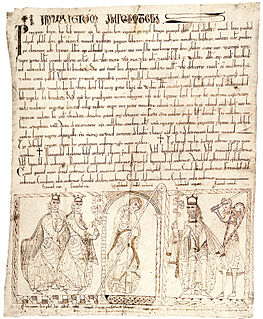
Imperator totius Hispaniae is a Latin title meaning "Emperor of All Spain". In Spain in the Middle Ages, the title "emperor" was used under a variety of circumstances from the ninth century onwards, but its usage peaked, as a formal and practical title, between 1086 and 1157. It was primarily used by the kings of León and Castile, but it also found currency in the Kingdom of Navarre and was employed by the counts of Castile and at least one duke of Galicia. It signalled at various points the king's equality with the rulers of the Byzantine Empire and Holy Roman Empire, his rule by conquest or military superiority, his rule over several ethnic or religious groups, and his claim to suzerainty over the other kings of the peninsula, both Christian and Muslim. The use of the imperial title received scant recognition outside of Spain and it had become largely forgotten by the thirteenth century.
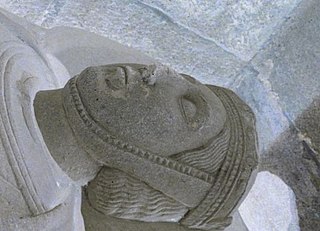
Berengaria of Barcelona, called in Spanish Berenguela de Barcelona, was Queen consort of Castile, León and Galicia. She was the daughter of Ramon Berenguer III, Count of Barcelona, and Douce I, Countess of Provence.

Rodrigo Jiménezde Rada, also known as Archbishop Don Roderic of Toledo, was a Navarrese-born Castilian Roman Catholic bishop and historian.
The Treaty of Sahagún ended a state of war between the Castile and León, establishing pacem et ueram amiciciam between their respective monarchs, Sancho III and Ferdinand II, who called themselves boni fratres et boni amici. It was signed at the monastery of Sahagún on 23 May 1158.
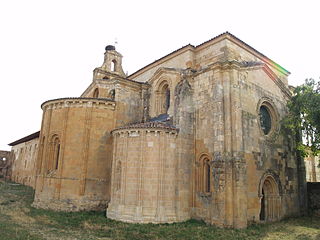
Ponce de Minerva was a nobleman, courtier, governor, and general serving, at different times, the kingdoms of León and Castile. Originally from Occitania, he came as a young man to León (1127), where he was raised probably in close connexion to the royal family. His public career, first as a courtier and knight in the military retinue of Alfonso VII of León and Castile, began in 1140. By later historians he was implicated in the strife between Alfonso's successors, Sancho III of Castile and Ferdinand II of León, but he was generally loyal to the latter, although from 1168 to 1173 he was in voluntary exile serving Alfonso VIII of Castile.
Ponce Giraldo de Cabrera, called Ponç Guerau in Catalan or Pons in Occitan, was a Catalan nobleman, courtier and military leader in the kingdoms of León and Castile.
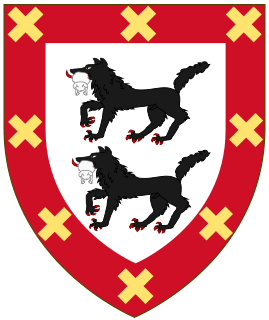
Lope Díaz II de Haro "Cabeza Brava" was a Spanish noble of the House of Haro, the sixth Lord of Biscay, and founder of the municipality of Plentzia. He was the eldest son of Diego López II de Haro and his wife, María Manrique. Lope was also a member of the Order of Santiago.
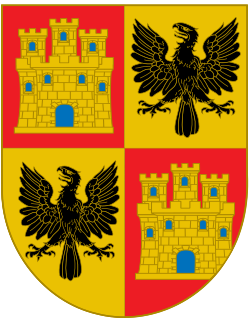
Philip of Castile was an Infante of Castile and son of Ferdinand III, King of Castile and León, and his first queen, Beatrice of Swabia. He was Lord of Valdecorneja, and, according to some sources, Knight of the Order of the Temple, in one of those churches, the Church of Santa María la Blanca in Villalcázar de Sirga, he was buried in a coffin adorned with emblems of the Templars.
Berengaria of Castile, Infanta of Castile and Lady of Guadalajara in her own right. She was the eldest child of King Alfonso X of Castile and Violante of Aragon. She was probably named after her paternal great-grandmother, Queen Berengaria of Castile.

Álvaro Núñez de Lara was a Castilian nobleman who played a key role, along with other members of the House of Lara, in the political and military affairs of the Kingdoms of León and Castile around the turn of the 13th century. He was made a count in 1214, served as alférez to King Alfonso VIII of Castile, was the regent during the minority of King Henry I of Castile, and was mayordomo (steward) to King Alfonso IX of León. He opposed Queen Berengaria of Castile and her son King Ferdinand III and supported the King of León during the war between the two countries of 1217–1218. At the end of his life he was a knight of the Order of Santiago, in whose Monastery of Uclés he was buried.
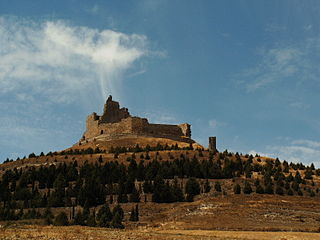
Gutierre Fernández de Castro was a nobleman and military commander from the Kingdom of Castile. His career in royal service corresponds exactly with the reigns of Alfonso VII (1126–57) and his son Sancho III (1157–58). He served Alfonso as a courtier after 1134 and as majordomo (1135–38). He was the guardian and tutor the young Sancho III from 1145. Before his death he was also briefly the guardian of Sancho's infant son, Alfonso VIII.